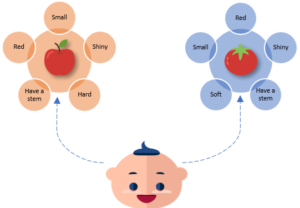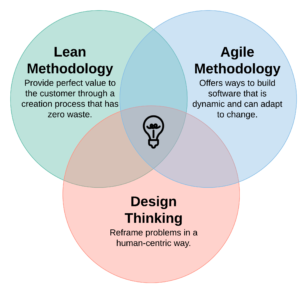Companies around the globe are continuously looking for innovative ways to increase their products’ performance, functionalities, quality, look, and to build solutions that are aligned around their users’ preferences and usage. In addition to using technologies to solve complex problems and enhance products, many organizations have been using a Design Thinking problem-solving approach to gain a deeper understanding of the people for whom they are designing the products and services for. That is, they aim to understand their target users, reframe problems in a human-centric way, and adopt a hands-on approach in prototyping and testing.
Einstein was certainly right: ”We cannot solve problems by using the same kind of thinking we used when we created them.”
To further understand Design Thinking, we should first understand how our brain works when it comes to processing and solving problems. A thinking schema helps us to categorize new information with information that we already have saved in our brains. When using Design Thinking, our thinking schemas should be turned off as they can discriminate the user’s needs. For example, a toddler may first develop a schema for a red apple. He knows that apples are small, hard, red, shiny, and have a stem. When the toddler encounters a tomato for the first time, he might initially call it an apple. After all, it fits with his schema for the characteristics of an apple: it is small, shiny, and red. Once he is told that it is a different fruit, called a tomato, he will modify his existing schema for apple and create a new schema for tomato.

The reason I gave this example is that the existing apple schema prevented the toddler from seeing the tomato as something unique and different; rather, his existing schema led him to categorize it as an apple. Using this analogy, the tomato represents the problem that our users want us to solve, and miscategorizing the tomato can lead to ineffective product design.
Thinking schemas can, at times, enhance problem-solving, but they can sometimes be harmful when it comes to trying to solve complex, out-of-the-box problems. Product managers and innovators often have pre-existing thinking schemas and therefore tend to make assumptions about what users are expecting from them. These assumptions can include User Interface (UI), User Experience (UX), product deadlines, enhancements, features, and many more. Organizations and product development teams strive to be Leaner in 2020, and making these kinds of assumptions can lead to an unnecessary, wasteful process.

Design Thinking by itself will not be successful without the combination of Lean and Agile methodologies. Lean is a user-centric methodology used to continuously improve any process through the elimination of waste in everything we do; it is based on the ideas of “Continuous Incremental Improvement” and “Respect for People.” Agile focuses on continuous improvement, scope flexibility, team input, and delivering essential quality products; it is the most common methodology software companies use these days for development iterations. The combination of Design Thinking and Lean Methodology should be embedded in every Agile project to create holistic user-focused results. We need to learn to be successful in marrying the three together to create powerful solutions for our users and customers.
To conclude, Design Thinking means thinking from the user perspective. Product Managers and innovators should concentrate on bringing their users’ voices into the product creation process to help fill the gaps between what the users want and need and what we provide them.








